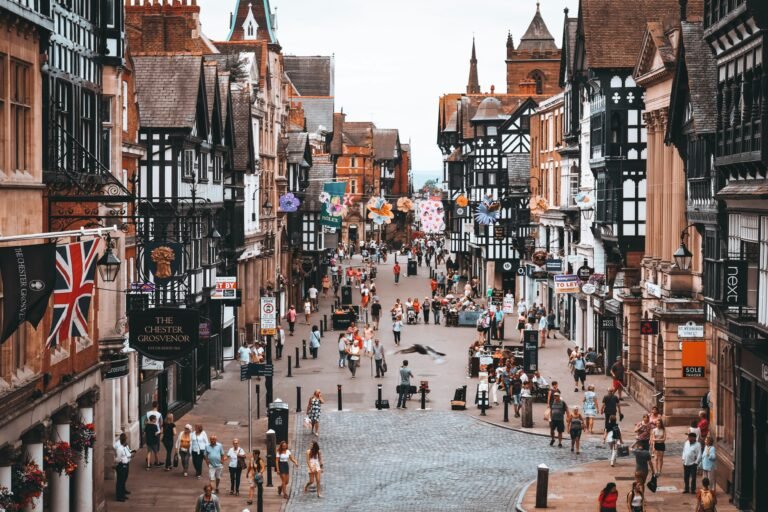Hadrian’s Wall, one of the most popular Roman structures in the world, has stood for about two millennia as a confirmation of the building ability and majestic might of ancient Rome. Extending across the narrow neck of Northern Britain, it served as a formidable barrier between the Roman territory of Britannia and the furious tribes of the north. But this wall was more than just a physical divide—it was a symbol of Rome’s aspiration, a tool for controlling relocation and trade, and a source of power that has echoed through history.
The Origins of Hadrian’s Wall
The construction of Hadrian’s Wall took place in AD 122 while Hadrian was the Roman Emperor. The emperor, recognized for strengthening and defending the boundaries of the Roman Empire instead of enlarging them, realized the importance of constructing a physical barrier to protect the northern border of Britannia. However, what was the reason behind needing this wall?
The Picts, among the northern tribes, were renowned for their strong opposition against Roman dominance. Hadrian imagined a protective wall that would not just prevent intruders, but also regulate the flow of individuals and resources in and out of the Roman region. The building of this Wall required the participation of numerous Roman soldiers and workers for an extended period of time.
Architectural Design
Hadrian’s Wall once covered a distance of 80 Roman miles, comparable to 73 modern miles, over Northern Britain from Wallsend on the River Tyne to Bowness-on-Solway. Built mainly using stone in the east and turf in the west, the building reflects the sorts of materials easily found in each locale.
The wall was not a single defensive barrier but included forts, milecastles, and turrets along its length. Milecastles, placed at consistent intervals, acted as miniature fortresses guarded by Roman soldiers, with turrets serving as observation posts. Bigger fortresses such as Housesteads and Vindolanda functioned as significant military compounds accommodating hundreds of troops. The wall’s design showcased Roman engineering mastery with added ditches and ramparts for increased defense fortification.
The Purpose of Hadrian’s Wall
The Wall wasn’t just a boundary against intrusions; it was a tool of control. Roman authorities utilized it to manage migration, monitor trade, and state their control over the local population. The wall also acted as a traditional post, where taxes could be required on goods moving between Roman and non-Roman regions.

Beyond its practical uses, the wall was an effective symbol of Rome’s might. It illustrated the empire’s capacity to force its will even in the farthest reaches of its domain. The very presence of such an enormous structure would have made a clear statement to Rome’s foes: This land, and the people in it, were under Roman control.
Life Along Hadrian’s Wall
What was life like for those who lived and worked along the wall? For Roman soldiers, the wall was a place of duty and discipline. Soldiers positioned in the fortifications performed regular patrols, maintained the wall’s guards, and kept watch for potential dangers from the north. Life in these military stations was structured, with soldiers following strict schedules of drills, construction work, and guard duties.
Civilian settlements also sprang up around the forts. These communities, made up of merchants, craftsmen, and families, provided goods and services to the soldiers. Trade with the local British tribes was common, and the economy along the wall thrived on this interaction.
Key Forts and Landmarks
Vindolanda, Housesteads, and Segedunum are among the key sites along Hadrian’s Divider. Vindolanda is eminent for its well-preserved composing tablets, giving a special understanding of the way of life of people in Roman Britain, including things like shopping lists and personal correspondence. Housesteads stand out as the most intact Roman fortification on the wall, highlighting perfectly protected barracks, granaries, and a Roman latrine system. Segedunum, located at the wall’s eastern end, served as a vital fortification monitoring the River Tyne.



The Decline and Fall of Hadrian’s Wall
For many years, The Wall served as a vital portion of the Roman Empire’s protective framework, but its significance declined along with the empire’s control. By the end of the 4th century, the Roman Realm was weakening, leading to the gradual removal of Roman soldiers from Britain. After the Romans left, the wall was left empty, and steadily, stones from it were utilized by nearby inhabitants for building houses, farms, and churches.
Rediscovery and Preservation of Hadrian’s Wall
The wall lay largely forgotten until the 19th century when antiquarians and archeologists started to take an intrigued in its ruins. Since then, broad excavations have revealed a wealth of information about Roman military life and the indigenous populations of Northern Britain. Nowadays, The Wall is ensured as a UNESCO World Heritage Site, and ongoing efforts continue to protect this iconic piece of history.
Hadrian’s Wall: A UNESCO World Heritage Site
In 1987, UNESCO recognized The Wall as a World Heritage Site for its significance in both British history and the history of the Roman Empire. Currently, the wall draws in numerous visitors annually, leading to a boost in the local economy and promoting a greater comprehension of Britain’s historical roots.
Cultural and Historical Impact
Over the centuries, The Wall has become more than just a historical artifact; it has seeped into the cultural consciousness. From appearing in literature and television (such as George R.R. Martin’s “Game of Thrones“) to influencing British identity, the wall stands as a symbol of the complex relationship between conquerors and the conquered.


Myths and Legends Surrounding Hadrian’s Wall
Like numerous ancient landmarks, The Wall is encompassed by myths and legends. Stories of ghosts, hidden treasure, and mysterious Roman soldiers still circulate nowadays. While these stories may not be truly accurate, they add to the appeal and mystique of the wall.
Walking Hadrian’s Wall Today
For modern travelers, the Hadrian’s Wall Path offers a chance to walk along this old frontier. Extending 84 miles, the path takes you through excellent landscapes, past ruins, and hills with breathtaking views. Whether you are a history buff or just enjoy hiking, walking the wall is an exceptional experience.
The Significance of Hadrian’s Wall in Roman History
The Wall wasn’t just significant for Britain; it was a key part of the Roman Empire’s strategy to maintain control over its vast territories. It marked the limits of Roman expansion in the British Isles and represented Rome’s commitment to securing its frontiers, even at great cost.
Hadrian’s Wall in Modern Archaeology
Archeological digs along The Wall proceed to yield intriguing disclosures. From ancient artifacts to new experiences in Roman engineering, each uncovering adds another piece to the puzzle of life along the wall. With innovations like LiDAR and 3D scanning, future research may reveal even more secrets buried beneath the soil.
Conclusion
Hadrian’s Wall continues to be a significant emblem of Roman Britain. The tall figure, standing out in the scenery and in our minds, signifies the creativity, aspirations, and intricacies of the human past. As more findings emerge, Hadrian’s Wall will keep providing an understanding of a bygone era, as well as motivating future generations.








